Table of Contents
Small changes in your daily routine can make a big impact on the planet. More people are embracing eco-conscious habits, especially when it comes to reducing waste at home. The EPA reports that households generate millions of tons of trash yearly—but switching to reusable alternatives can help.
From ditching plastic wrap to choosing energy-efficient tools, simple swaps add up. Every little effort counts, and you don’t need a full overhaul to start. This guide focuses on easy, budget-friendly ideas you can try today.
Whether you’re new to sustainability or looking for fresh tips, these changes are practical and effective. Let’s explore how small steps lead to meaningful progress.
1. Switch to Eco-Friendly Cleaning Products
Ditch harsh chemicals and plastic waste with smarter choices. Everyday cleaning products often contain toxins and single-use plastics. Swapping them for greener alternatives protects your health and the planet.
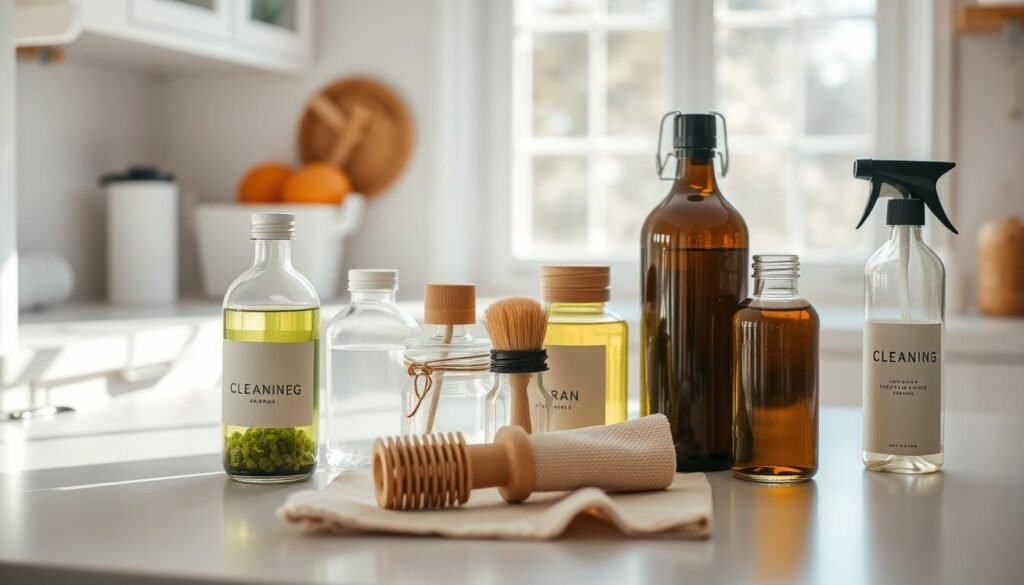
Opt for refillable glass bottles
Brands like Peace With The Wild and Ecovibe sell concentrates in recyclable pouches. Refill your glass bottles instead of buying new ones. Over time, this cuts plastic waste and saves money.
Choose biodegradable sponges and brushes
Traditional sponges take 500+ years to decompose. Compostable options from Full Circle break down in 3–6 months. Here’s how they compare:
| Type | Decomposition Time | Cost (per year) |
|---|---|---|
| Plastic sponge | 500+ years | $15 |
| Biodegradable sponge | 3–6 months | $20 |
Try plant-based dish soap
Phosphate-free formulas reduce chemical runoff by 72%. Stores like Whole Foods offer bulk refills, slashing costs. One family cut plastic waste by 80% in six months by switching to these items.
2. Ditch the Plastic for Good
Plastic waste is choking our planet, but simple swaps can turn the tide. Single-use items like cling film and shopping bags contribute heavily to landfills. Opting for reusable alternatives slashes waste and saves money long-term.
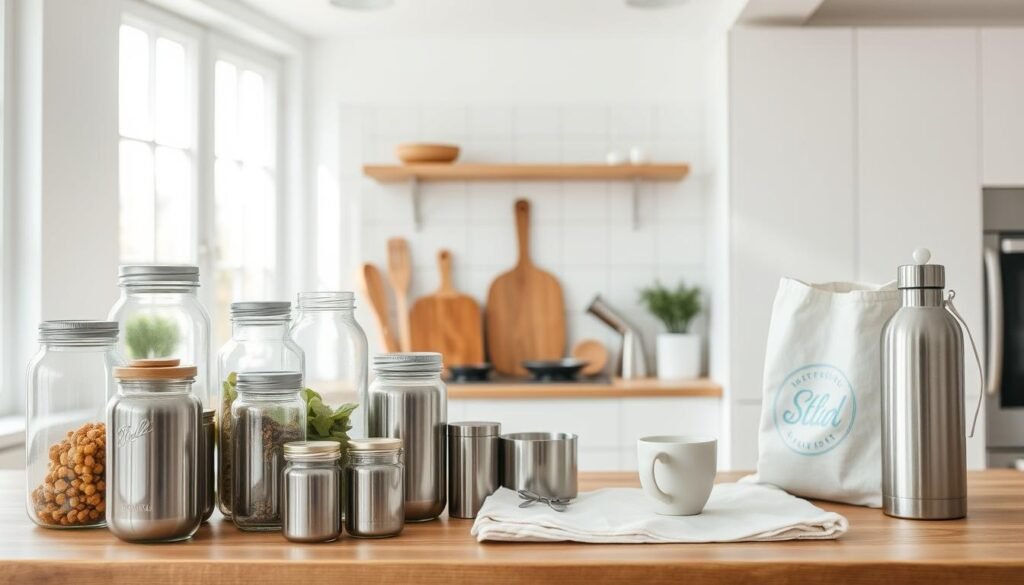
Beeswax wraps replace cling film
These eco-friendly wraps last over a year with proper care. Made from organic cotton and beeswax, they mold to bowls or food with just your hands. USDA guidelines show a family of four saves 200+ feet of plastic wrap annually.
Reusable shopping bags cut clutter
Keep foldable totes in your car or entryway for impromptu grocery runs. Brands like Baggu offer stylish, machine-washable options. Pro tip: Hang a hook by the door to never forget them again.
Bamboo cutlery for on-the-go meals
Durable bamboo sets from To-Go Ware prevent 450+ disposable utensils per household yearly. Lightweight and stylish, they’re perfect for picnics or lunchboxes. Compare them to plastic below:
| Feature | Bamboo Cutlery | Plastic Utensils |
|---|---|---|
| Decomposition Time | 4–6 months | 500+ years |
| Cost Over 5 Years | $25 | $75 |
Zero-waste stores like Bulk Nation offer package-free bulk sections. Bring your jars to stock up on pantry staples—no plastic needed.
3. Invest in Long-Lasting, High-Quality Cookware
Quality cookware pays for itself over time while reducing waste. Cheap pans warp, peel, and end up in landfills. Durable materials like cast iron or stainless steel outperform disposable options.
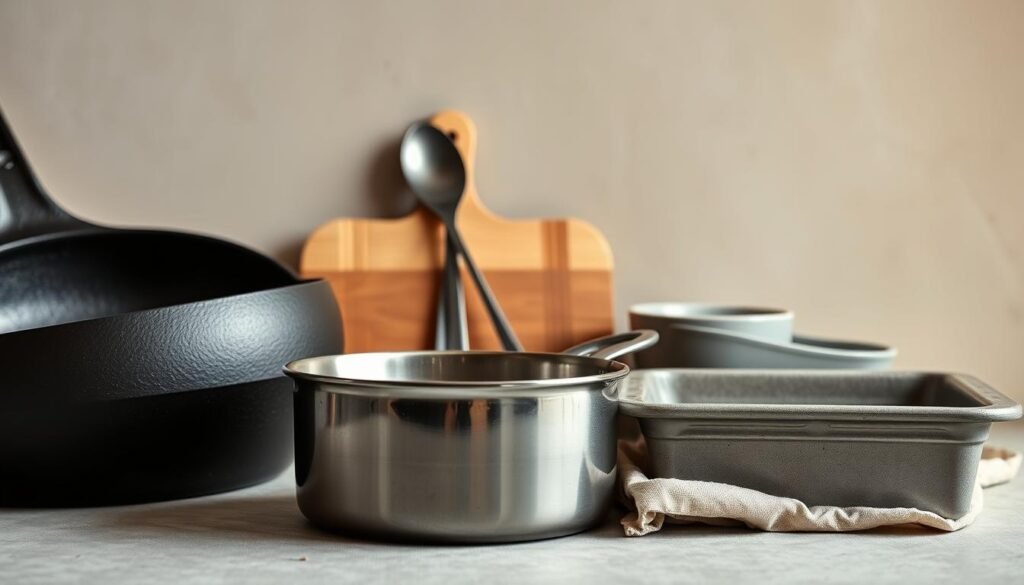
Look for lifetime guarantees
Brands like All-Clad offer 40-year warranties—proof their products last. One study found premium cookware costs 60% less per use over a decade. Lodge’s cast iron skillets even improve with age.
Avoid non-stick coatings with harmful chemicals
Traditional non-stick pans release PFAS toxins when overheated. PTFE-free ceramic coatings reduce fume risks by 89%. Opt for brands like GreenPan, certified by independent safety tests.
Choose cast iron or stainless steel
Cast iron retains heat 3x longer than aluminum, saving energy. Stainless steel resists scratches and won’t react with acidic foods. Here’s how they compare:
| Feature | Cast Iron | Stainless Steel | Non-Stick |
|---|---|---|---|
| Heat Retention | Excellent | Good | Poor |
| Lifespan | 50+ years | 30+ years | 2–5 years |
| Chemical Risk | None | None | High |
Season cast iron with oil to prevent rust. B Corp brands like Made In Cookware use recycled materials, blending ethics with performance. Pro tip: Buy secondhand—vintage pieces often outlast new ones.
4. Upgrade to Energy-Efficient Appliances
Smart appliance upgrades slash utility bills while cutting environmental footprints. Modern models use less energy and water, saving you money yearly. The DOE’s 2024 efficiency standards push brands to innovate further.

Check for updated energy ratings
ENERGY STAR-certified refrigerators save $300+ over their lifespan. Look for the yellow EnergyGuide label—it compares models’ annual costs. Pro tip: Bosch’s 800 Series dishwasher has a 0.91 EF rating, using just 3.2 gallons per cycle.
Consider induction hobs over gas
Induction cooktops transfer 85% of heat energy, versus gas’s 40%. They boil water faster and stay cooler to the touch. See how they stack up:
| Feature | Induction | Gas |
|---|---|---|
| Efficiency | 85% | 40% |
| BTU Output | 15,000+ | 12,000 |
| Safety | Auto-shutoff | Open flame |
Invest in water-efficient dishwashers
New models use 70% less water than older ones. The Inflation Reduction Act offers rebates for ENERGY STAR purchases. Example: A family of four saves 6,000 gallons a year by upgrading.
5. Cook More Sustainably
Revamping how you prepare meals can shrink your carbon footprint without extra effort. Small tweaks—like maximizing oven space or using residual heat—add up to significant savings. Think of it as multitasking for the planet.
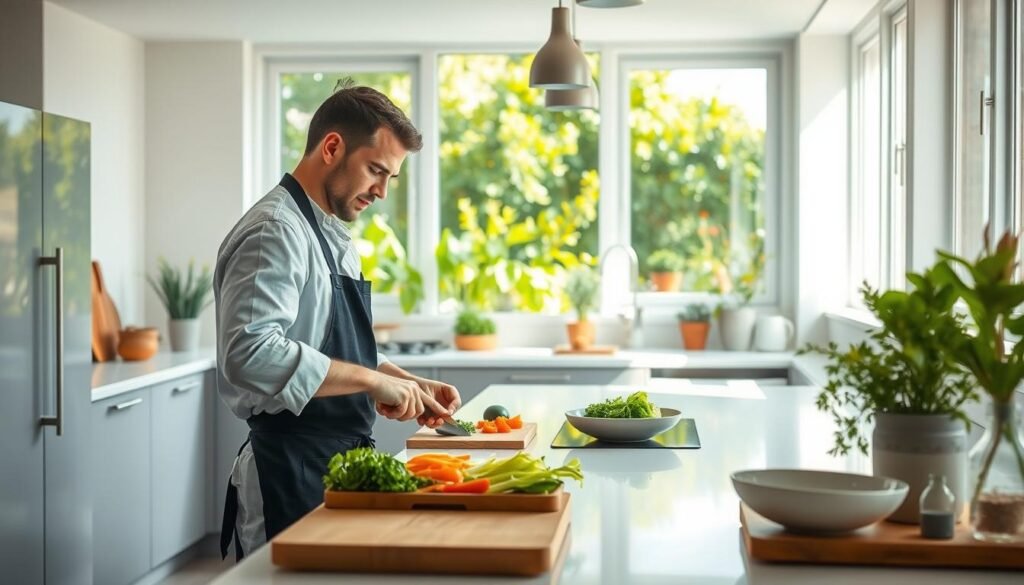
Batch cook to slash energy use
Prepping multiple meals at once cuts oven runtime by 4 hours weekly for the average household. Try these strategies:
- Meal templates: Dedicate Sundays to roasting veggies and proteins for easy weekday assembly.
- Thermal mass magic: Dutch ovens retain heat for hours—perfect for finishing grains without power.
- Appliance showdown: Pressure cookers use 70% less energy than slow cookers for beans and stews.
Harness residual heat
Turn off burners 2–3 minutes early—pans stay hot enough to finish cooking pasta or stir-fries. This trick trims 8–10% off monthly bills. Pro tip: Cast iron’s heat retention makes it ideal for this hack.
Cover pots to boil water faster
An MIT study confirms lids reduce boiling time by 25%. Ensure a snug fit—glass lids let you monitor bubbles without lifting. Compare methods below:
| Method | Time to Boil (1L water) | Energy Used |
|---|---|---|
| Uncovered pot | 8 minutes | 0.15 kWh |
| Covered pot | 6 minutes | 0.11 kWh |
Pair these tricks with seasonal food prep to save money and water. A family of four could save $150 yearly just by optimizing cook time.
6. Buy Local and Seasonal Ingredients
Eating local isn’t just trendy—it’s a game-changer for your pantry and the planet. Locally sourced food travels 27x fewer miles than supermarket equivalents, slashing emissions. Seasonal picks also require fewer preservatives and energy-intensive storage. Think crisp apples in fall or juicy tomatoes in summer—nature’s menu is already optimized.
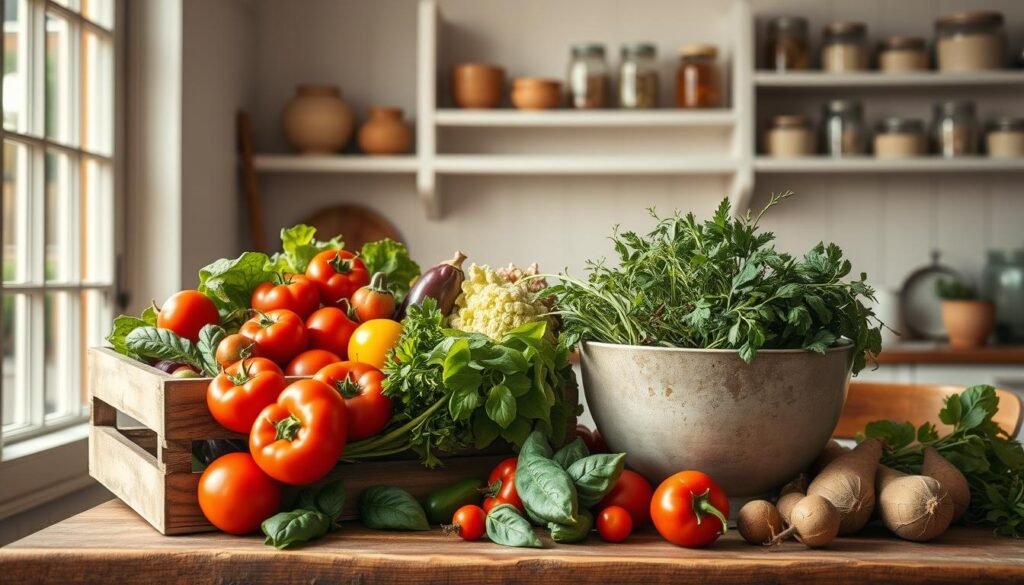
Farmers’ markets: Freshness unlocked
Skip the fluorescent-lit aisles for open-air stalls. Farmers’ markets offer peak-ripeness produce, often harvested within 24 hours. Use the USDA’s Local Food Directory to find vendors near you. Bonus: Many accept SNAP benefits, making healthy eats affordable.
CSA boxes: Waste-free and convenient
Community-Supported Agriculture (CSA) deliveries reduce packaging waste by 60% versus store-bought veggies. Services like Imperfect Foods rescue “ugly” produce that would otherwise be trashed. A typical box feeds a family of four for a week with zero plastic clamshells.
Why air miles matter
Globally shipped food loses nutrients and guzzles fuel. Seasonal tomatoes grown locally need 47% less energy than greenhouse imports. Preserve summer’s bounty with these easy tricks:
- Freeze berries on sheet pans before bagging to prevent clumps.
- Pickle cucumbers in vinegar solutions for crunchy snacks year-round.
- Dry herbs in bundles hung away from sunlight.
| Factor | Local Seasonal Food | Supermarket Imports |
|---|---|---|
| Travel Distance | 50 miles avg. | 1,350+ miles |
| Nutrition Retention | High (fresh-picked) | Low (days in transit) |
| Carbon Footprint | 0.2 kg CO2/lb | 5.3 kg CO2/lb |
Calculate your savings with the EPA’s GHG equivalencies tool. A household switching to 80% local food cuts emissions equal to 1,000 miles driven annually. That’s a win for both your plate and the environment.
7. Invest in Quality Kitchen Cabinetry for a Sustainable Kitchen
Your cabinets do more than store dishes—they define your home’s eco-footprint. Choosing durable materials cuts waste and adds value. Brands like Naked Kitchens prove style and sustainability can coexist, using 100% FSC-certified timber with near-zero waste.

Seal of approval matters
FSC or PEFC-certified wood ensures responsible forestry practices. These standards protect biodiversity and reduce illegal logging by 72%. Pro tip: Look for chain-of-custody numbers on labels to verify authenticity.
Solid beats disposable
Real wood cabinets last 40+ years, while MDF warps in a decade. Pioneer Millworks offers reclaimed options from old barns—each piece tells a story. Compare the key differences:
| Feature | Solid Wood | MDF |
|---|---|---|
| Lifespan | 40+ years | 10 years |
| Formaldehyde | 0 ppm | 0.3 ppm |
| Resale Value | High | Low |
Partner with planet-conscious makers
B Corps like Henrybuilt use water-based PU paints, slashing VOC emissions by 78%. Their modular systems adapt to future needs without replacements. For old cabinets, Habitat ReStore diverts 80 tons from landfills yearly through resale programs.
Timeless designs in oak or walnut never go out of style. As one Seattle homeowner shared: “Our 1940s cabinets still look pristine—we just updated the hardware.” That’s the power of choosing well.